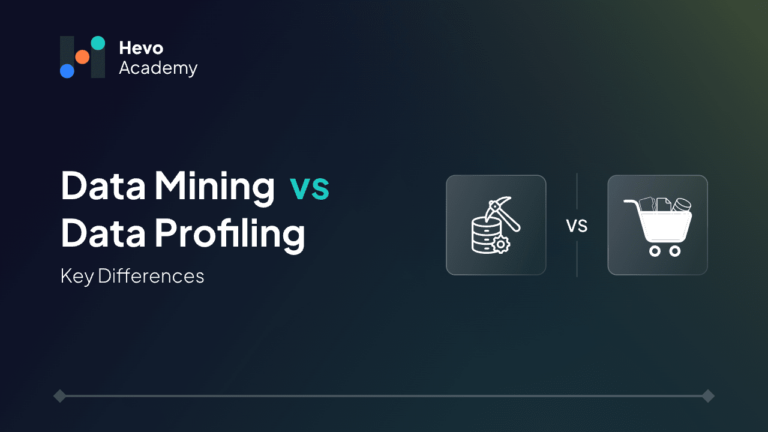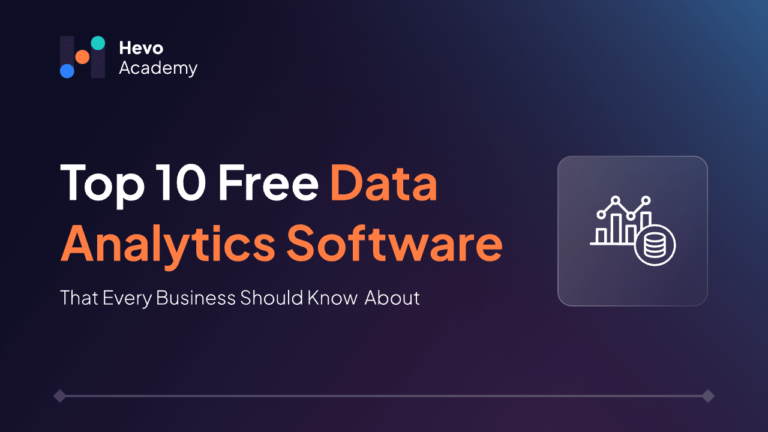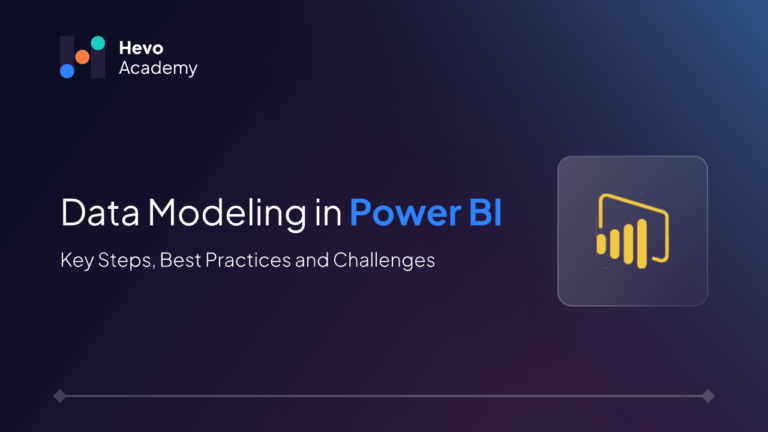Today’s business world is heavily reliant on good, useful, and relevant data. Both data mining vs data profiling are essential techniques that support this effort. Data mining is an important field that focuses on finding patterns and relationships within a large dataset. Data profiling is about analyzing data quality and structure while making sure that it is accurate and usable. If you understand what these techniques are, it’s important for your company’s digital strategy to properly handle data. Together, these techniques enable businesses to optimize operations, find areas for growth, improve the customer experience, and promote innovation in competitive markets globally.
Table of Contents
What is Data Mining?
Data mining is a process of analyzing large datasets to find patterns and correlations, hence insights that could not be seen at first glance. It starts identifying meaning in the data through the application of advanced techniques such as statistical models, algorithms, and machine learning. In environments where there is a need to process high volumes of data quickly to achieve a strategic goal, data mining is often used to help inform strategic decisions.
What is Data Profiling?
Data profiling refers to the examination of data to evaluate its quality, structure, and consistency. The area of focus is data evaluation at a granular level to identify inaccuracies, inconsistencies, missing values, and redundancies. In contrast to data mining, which uncovers patterns and trends, data profiling focuses on making sure that the data being used is accurate and valid. In this process, statistical summaries within the data are analyzed, and insights are generated into the integrity of the data.
What are the Key Differences Between Data mining vs Data profiling?
| Features | Data Mining | Data Profiling |
| Purpose | Identifies patterns, trends, and relationships within data | Assesses the quality, structure, and consistency of data. |
| Data type | Works with large datasets, often unstructured or semi-structured | Primarily focuses on structured datasets. |
| Process | Involves complex algorithms, statistical methods, and machine learning techniques. | Involves data analysis techniques, metadata examination, and statistical summaries. |
| Tools | Utilizes advanced tools like RapidMiner, SAS, and Hadoop. | Employs tools like Talend, Informatica, and IBM InfoSphere. |
| Techniques | Includes classification, clustering, association rules, and regression analysis. | Focuses on identifying null values, duplicates, data types, and format inconsistencies. |
Purpose
Data Mining:
Data mining uses advanced methods of machine learning, statistical algorithms, and analysis techniques to predict future behavior and unearth latent correlations, enabling derived insights to be acted upon by organizations.
Data Profiling:
The purpose of data profiling is to evaluate and verify that data are of good quality, consistent, and usable within an organization. It is about going into minute detail in your data to spot things like duplicates, missing values or even formatting inconsistencies so that your data is ready for processing.
Data Types
Data Mining:
Data mining works with large and diverse datasets, structured, semi-structured, and unstructured.
- Structured data looks like tables in relational databases and is easier to analyze with traditional methods.
- When the data is semi-structured, such as XML or JSON files stored in non-relational databases, it has some structure and some elements of unstructured.
- Unstructured data is more complex and covers text, images, videos, and social media data.
Data Profiling:
Data Profiling is largely based on data that has a consistently formatted structure like database tables or spreadsheets. It involves the interpretation of some aspects, such as the size of fields contained in each table, the homogeneity of data fields, the primary key used in the data, and data distribution.
Process
Data Mining:
- The data mining process begins with obtaining data and useful information from different sources like databases, spreadsheets and external systems.
- After that, the actual data is preprocessed, and researchers eliminate errors, inconsistencies, and irrelevant information. The next step is to convert the data to an appropriate format for examination, such as normalization or encoding.
- After the preprocessing step, data mining algorithms like classification, regression, and association rule mining are applied.
- Finally, the findings are concluded and visualized to convey strategic implications to the stakeholders for leveraging them to make decisions.
Data Profiling:
- The process of data profiling starts with data extraction, mainly from databases and datasets.
- The data is then screened for a range of attributes, including completeness, internal consistency, and conformity.
- Descriptive measures like mean, median, and standard deviation are also calculated to further understand data distribution and data quality.
- According to the results of the analysis, further data cleaning or transformation actions are suggested to enhance the data quality.
Tools
Data Mining:
Data mining uses a number of other sophisticated instruments that facilitate the search for valuable information based on large datasets.
- RapidMiner is a versatile data mining and machine learning software that has integrated algorithms and processes.
- SAS or Statistical Analysis System, is another important tool which is employed for the purpose of large data analysis with predictive models and statistical analysis.
- Apache Hadoop and Spark are fundamental tools that allow handling and processing of big data in distributed systems.
- KNIME and Orange have a graphical user interface for the construction of data mining processes. They can still be useful even for those users who have no programming background, and they contain plenty of opportunities for deep data analysis for professional data miners.
Data Profiling:
Data profiling tools, on the other hand, are built with the objective of evaluating quality and completeness of data by pointing out errors, inconsistencies, and possibly voids. Some of the most popular ones are:
- Talend is an open-source tool that provides end-to-end solutions for data integration and quality. It is used to profile data and enable an organization to evaluate the quality of a given dataset and then prepare the data for analysis.
- Informatica has enhanced data profiling, which includes approximate quality checks, data cleaning, and validation.
- IBM InfoSphere is an example of another tool that can perform profiling, allowing large datasets to be evaluated and anomalies to be detected in order to confirm data readiness.
Techniques
Data Mining:
Data mining is a group of methods for extracting useful patterns from large datasets.
- One of them is data classification, which means assigning data to predetermined classes according to their characteristics.
- Another common method is clustering, this method is used to meet the integration needs by grouping similar data points, which are thought to be clustered into natural formats.
- Another is association rule mining, which is effective in discovering relationships between variables.
- Regression analysis provides prediction of the continuous dependent variables, for example, in sales prediction or in predicting stock prices.
- Functions employing anomaly detection consist of searching for entities or values that are unexpected, for instance, in fraud or intrusion detection.
Data Profiling:
In data profiling, many techniques are employed in order to determine the quality and consistency of data.
- Pattern matching is used to identify format inconsistencies, such as incorrect phone numbers or email addresses.
- Statistical profiling entails the process of surveying data distributions, including mean, median, and the frequency of values by which data varies from the norm.
- Integrity checks are performed in order to check if all fields in the given dataset have correct data types, e.g., numbers, strings, dates etc.
- Another important process is null value detection, which involves identifying missing or incomplete data that can influence analysis.
Use Cases of Data Mining vs Data Profiling in Real-World Business Organizations
Data Mining
- Customer Segmentation: Businesses apply data mining to categorize customers by purchasing habits, age, and preferences. Hence, this method of segmentation ensures organization-specific targeting and sales promotional campaigns that enhance customer satisfaction and loyalty.
- Fraud Detection: In financial services, data mining techniques such as anomaly detection tools alert the user of particular transactions or patterns that look as if they might be fraudulent.
- Predictive Maintenance: Retention analysis of the past maintenance data and data collected from machinery sensors makes it easier for companies to predict when machinery is most likely to break down, thereby allowing them to schedule a plan for maintenance and minimize downtime.
- Market Basket Analysis: Retailers are able to use data mining in order to find out what products are frequently bought together. This technique, known as association rule mining, assists the business in-store management, developing the promos and forming product-based combinations that appeal to customer buying patterns.
- Sales Forecasting: Sales forecasting enables organizations to determine how much stock they should order, adjust their price levels and also determine which resources should be allocated.
Data Profiling
- Data Quality Assurance: Profiling in a healthcare organization is used to check for missing or inconsistent patient records and the completeness of medical data for decision-making and to meet regulations.
- Data Integration: In a merger, companies can profile data from different systems to check discrepancies and align all the data before integrating it.
- Regulatory Compliance: Profiling can support the evaluation of which data is missing in reports and what regulatory requirements, including GDPR or SOX (Sarbanes-Oxley), are being violated.
- Improving Customer Data: Retailers and marketers use data profiling to ensure that customer data is accurate and up-to-date. Data profiling scans for a blank field, an improper address, or media types, allowing for precise targeting and activation of leads while increasing the overall customer experience.
Conclusion
Data Mining vs data profiling, both essential for facilitating organizations to manage the data that they have. While data mining discovers hidden patterns and predictive insights, data profiling guarantees data integrity, consistency, and quality and makes it ready for analysis. Understanding the basic differences and purposes of these techniques, businesses can tailor their data approach to really offer the greatest value whilst decreasing the risk of poor decisions and mismanagement. When combined, the two approaches enable organizations to unlock the true potential of their data, innovate, become more efficient, and stay competitive in an increasingly data-driven world.
With Hevo, businesses can automate data integration, ensuring data consistency and quality across multiple sources. This enables more accurate data profiling and mining, empowering organizations to unlock valuable insights and make smarter, data-driven decisions faster. Try a 14-day free trial and experience the feature-rich Hevo suite firsthand. Also, check out our unbeatable pricing to choose the best plan for your organization.
FAQs
1. What are the two major types of data mining?
The two basic categories of data mining are descriptive data mining and predictive data mining. Descriptive data mining pays a lot of emphasis on recounting past data with a view of pointing out patterns, while predictive data mining relies on data to predict future tendencies and behaviors.
2. Is data mining a sub-process of profiling?
Data mining is not a sub-process of data profiling. But data mining is primarily concerned with the identification of patterns and knowledge within huge databases and datasets; on the other hand data profiling refers to the examination of the data, their attributes, and their suitability for analysis.
3. Is data profiling an ETL process?
Data profiling is not an ETL process, though it is commonly employed in conjunction with ETL activities. Profiling is used to identify and clean data before it is converted and moved to the data warehouse to avoid the use of poor-quality data.





